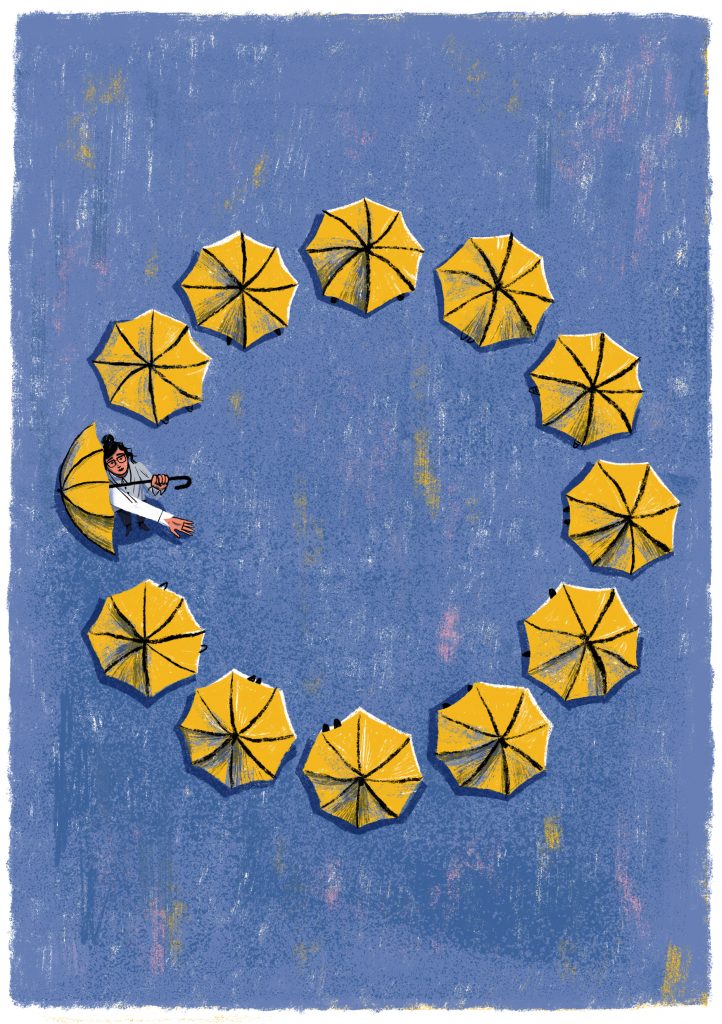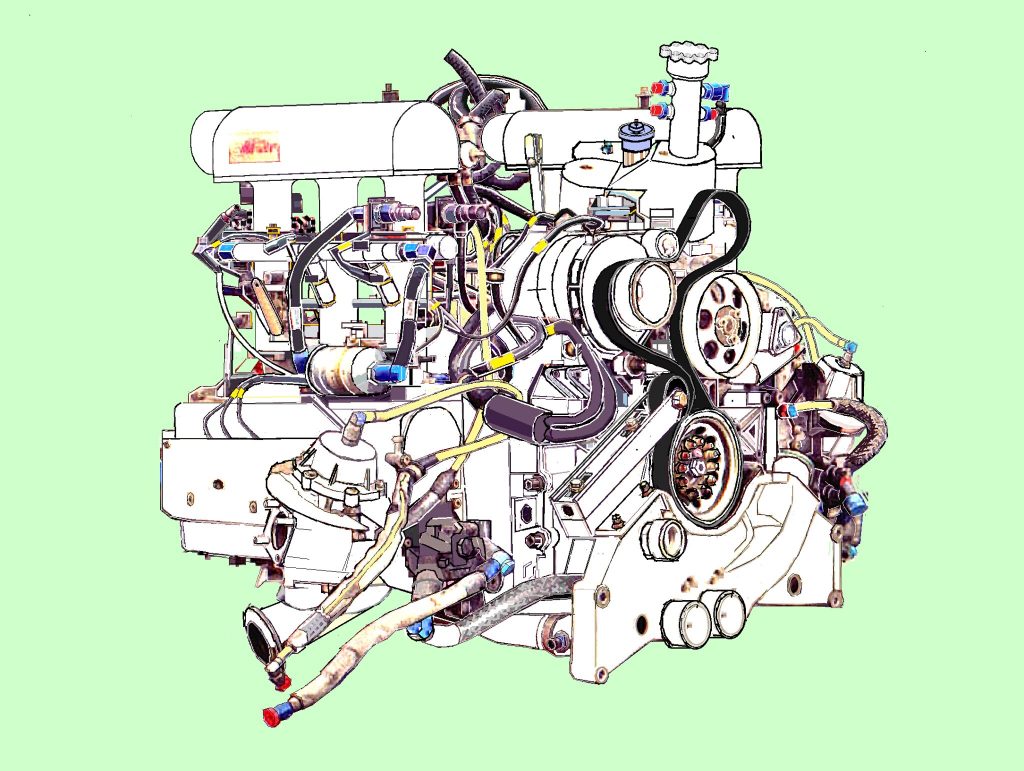Chapter 10: Synthesis and Drafting
Opening & Closing Your Research Paper
 Let’s talk about narrative structure and research papers again. Most scientific papers, as you probably remember, follow the IMRAD structure. However, because you may not be conducting primary research at this point, your research papers may follow an IDC structure (Introduction, Discussion and Conclusion), as well as your References page. Your professor may also ask you to write an Abstract.
Let’s talk about narrative structure and research papers again. Most scientific papers, as you probably remember, follow the IMRAD structure. However, because you may not be conducting primary research at this point, your research papers may follow an IDC structure (Introduction, Discussion and Conclusion), as well as your References page. Your professor may also ask you to write an Abstract.
In this section, you will learn strategies for effectively opening and closing a research paper. The discussion section (sometimes referred to as the body) will be the support for your argument. For guidance on forming a scholarly argument in your Discussion section, review Chapter 8: Making a Research Argument.
Opening Your Research Paper (Introduction)
In an article called “Elements of Style,” (2007) the editorial team at Nature Publishing Group outlines what it’s looking for in a well-written scholarly paper.
They start by talking about the introduction:
This is a big task for an introduction—to tell your paper’s central story and why it matters!
Here is a template you might want to consider when crafting your introduction to help you achieve this task:
- Concretely (clearly) describe/introduce the topic & focus.
- Give any necessary context or background
- Summarize the state of knowledge (ie. the conversation you are joining).
- What is known? What is unknown?
- Explain your paper’s main argument (your thesis).
- What is it and why does it matter?
Student Example
Making Meat: Satisfying Global Meat Demand Through a Cell-Based Alternative
Scientists have been growing meat in vitro since the early 2000’s. The cell-based meat industry became a feasible reality in 2013, when vascular biologist Mark Post presented the world’s first lab-grown burger (Dolgin, 2020). Significant progress has been made since, indicating the possibility of a commercial product. Chicago firm Kearney “suggests that 35% of all meat consumed globally by 2040 will be cultured” (Dolgin, 2020, para. 4). In short, the industry is expanding, but it is also relatively new. Limited precedent means research to date lacks clear-cut projections, leaving the future uncertain but promising. The industry faces numerous obstacles and as alternative-protein venture capitalist Abhi Kumar stresses, the leading challenge is “making it work at scale” (Dolgin, 2020, para. 6). Essentially, to be available commercially, production must increase tenfold.
Cell-based meat rivals meat substitutes by accurately replicating real meat. Traditional livestock raising places severe pressures on the planet, accounting for 14.5% of human induced GHGs and using extensive resources like water, energy and fertilizer (Santo et al., 2020). The world urgently needs a solution to the current farmed-meat crisis. Cell-based meat can mitigate many of the problems global farmed-meat inflicts, thus, revolutionizing our food system for a sustainable future.
Can you find the sections in the student example that give background and content? What about the summary of the conversation—what is known and unknown? Can you find the paper’s main claim and why the argument matters?
Composing Main Claims (Thesis Statements)
I encourage you to think about the function of your main claim, or thesis statement, as the engine of your argument. I’ve often heard people refer to thesis statements as a map, but the problem with maps is that they are passive. Conversely, an engine is active; it gives your argument and ideas power to move—to move the conversation forward, to move your reader to action, to move your ideas out of your paper and into the world. If your main claim, or thesis statement, is too vague or not specific enough, or if it is more of an observation than an argument, then your paper will likely lack the focus and power it needs to carry your reader to the conclusion.
 If the function of the thesis statement is an engine, then a great metaphor for considering its structure is an umbrella. Think about the shape of the umbrella as your large overarching claim. The spokes of the umbrella are what support the shape. The spokes can be one or more reasons that will help you prove your overarching argument, but they can also be why your argument matters.
If the function of the thesis statement is an engine, then a great metaphor for considering its structure is an umbrella. Think about the shape of the umbrella as your large overarching claim. The spokes of the umbrella are what support the shape. The spokes can be one or more reasons that will help you prove your overarching argument, but they can also be why your argument matters.
Examples
Urban gardens increase food security because they reduce the risk of disruption to food supplies by diversifying where and how we grow our food.
Your main argument + linking word (ex. “because” or “by” or “through”) + reason why it’s important OR reasons that will prove your overarching argument.
Remember, your thesis statement or main claim should answer your research question. It is inspired by your sources but is invented by you—it’s your contribution to the conversation.
Closing Your Research Paper (Conclusion)
In the same “Elements of Style” article quoted in the previous section, the editors give some valuable advice about conclusions:
“It is commonly advised that a paper should begin by stating what will be said, continue by saying what is to be said, and then conclude by summarizing what has been said. This is bad advice that recommends lazy composition. Conclusions are not mandatory, and those that merely summarize the preceding results and discussion are unnecessary. Rather, the concluding paragraphs should offer something new to the reader” (Nature Publishing Group, 2007, p. 582).
The article quotes computer scientist Jonathan Shewchuk, “A good conclusion says things that become significant after the paper has been read. A good conclusion gives perspective to sights that haven’t yet been seen at the introduction. A conclusion is about the implications of what the reader has learned” (Nature Publishing Group, 2007, p. 582).
So how do you offer something new in your conclusion? How do you push the conversation forward?
There are many different ways to write a conclusion. Here’s a template you might want to consider that will help you leave the reader with new insight.
- Instead of summarizing your argument, summarize how your paper has joined, contributed and modified the larger conversation or the research you’ve read.
- Identify future directions for work on this topic (ideas for research that could help fill knowledge gaps, suggestions for practical applications of your findings, any questions you still have).
- The last sentence: restate your paper’s “so what”? This is the mic dropper! Why does your research matter? What will happen if we don’t address the problems you’ve identified or implement the solutions you’ve suggested?
References
Nature Publishing Group. (2007). Elements of Style. Editorial, Nature Physics, Vol. 3, No. 9. https://imechanica.org/files/Nature%20physics%20elements%20of%20style.pdf
Media Attributions
- Tiny screenwriter sitting on retro typewriter © pch.vector is licensed under a CC BY (Attribution) license
- 993 GT1 Engine On Box drawing 2018_3_24 © Bill Abbott is licensed under a CC BY-SA (Attribution ShareAlike) license
- After the Storm © Sidsel Sørensen is licensed under a CC BY-NC-SA (Attribution NonCommercial ShareAlike) license
- Mic drop © Storyset is licensed under a CC BY-NC-SA (Attribution NonCommercial ShareAlike) license
Abbreviation for a way to structure a scientific paper; the respective components represented by each letter are: introduction, methods, result, analysis, discussion.
Something that is academic in nature.
An author reiterates the main ideas, arguments, and details of a text in their own words, condensing a longer text into a smaller version. Contrast with paraphrase.
A statement that makes a claim or presents a theory. A thesis is the “focal point” of many academic works, which tend to hinge on either proving or challenging the main claim made in the thesis.



